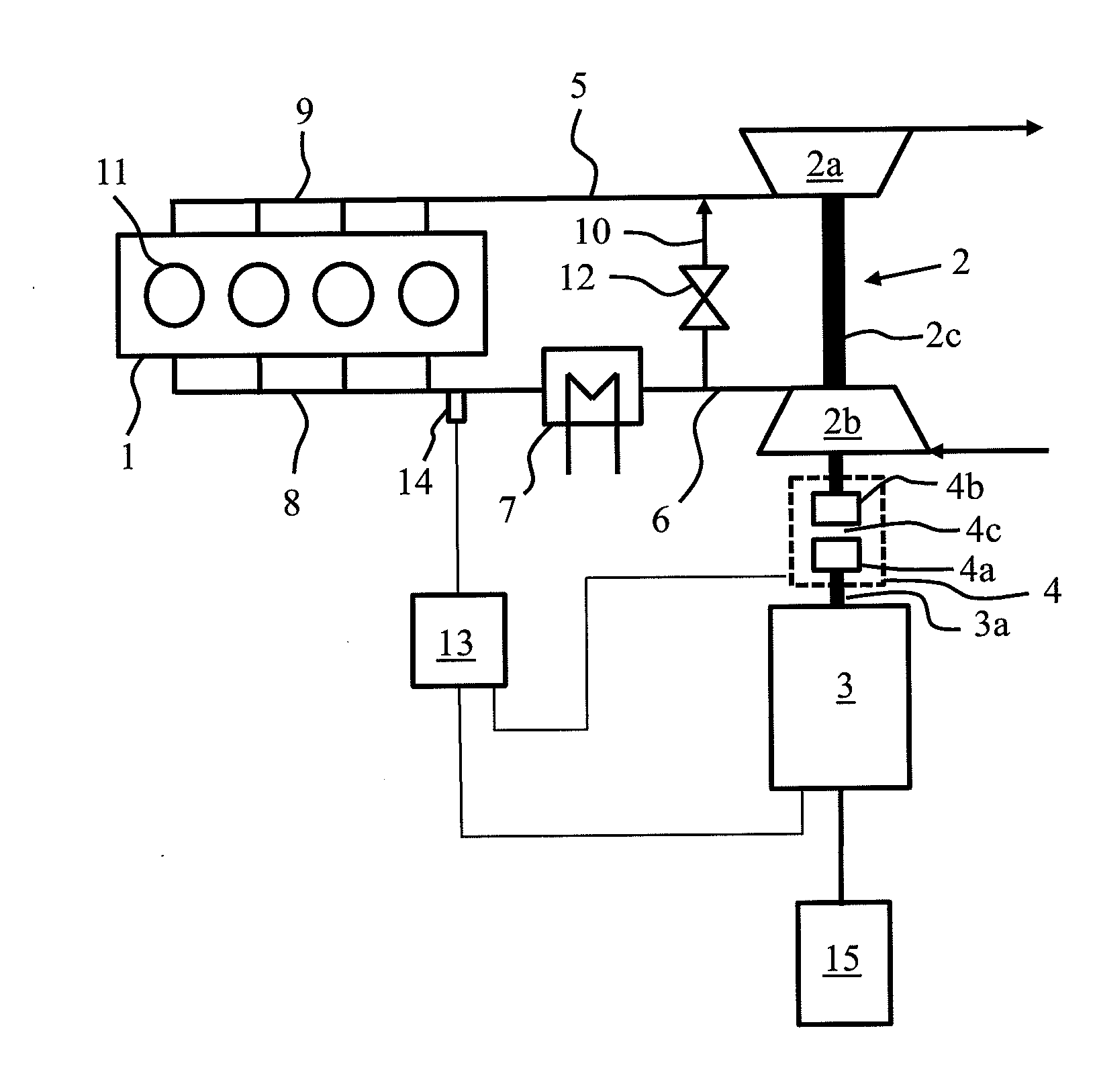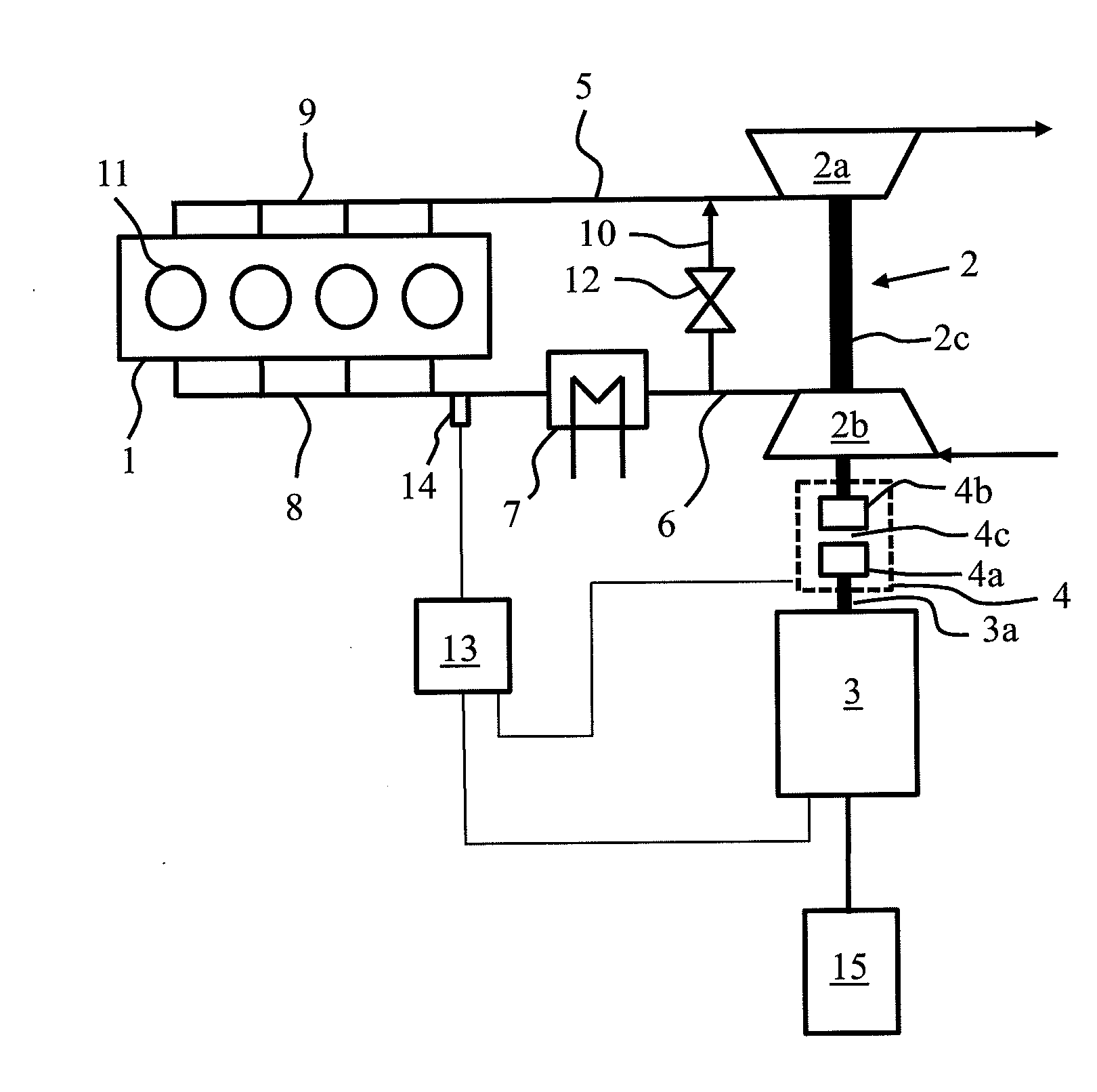Turbocharging arrangement and method for operating an internal combustion engine
a technology of internal combustion engine and throttle arrangement, which is applied in the direction of combustion engine, engine components, machines/engines, etc., can solve the problems of slow increase of engine speed and load when requested, low available engine torque, and limited load range of turbochargers, so as to increase load or engine speed, the effect of fast response of the turbocharger
- Summary
- Abstract
- Description
- Claims
- Application Information
AI Technical Summary
Benefits of technology
Problems solved by technology
Method used
Image
Examples
Embodiment Construction
[0022]The invention is now described in more detail with reference to the accompanying drawing. The FIGURE shows a turbocharging arrangement for an internal combustion engine 1 according to an embodiment of the present invention. The arrangement comprises a turbocharger 2 comprising a turbine 2a and a compressor 2b. The turbine 2a and the compressor 2b are connected to each other in a rotationally fixed manner via a shaft 2c.
[0023]The turbine 2a of the turbocharger 2 is connected with an exhaust manifold 9 and exhaust pipe 5 to the cylinders 11 of the engine 1. Via the exhaust manifold 9 and the exhaust pipe 5 the exhaust gases from the engine 1 are guided into the turbine 2a for rotating the turbocharger 2. An intake duct 6 and an intake manifold 8 connect the compressor 2b of the turbocharger 2 to the cylinders 11 of the engine 1. The compressor 2b pressurizes the intake air introduced into the engine 1. A charge air cooler 7 is arranged between the intake duct 6 and the intake m...
PUM
 Login to View More
Login to View More Abstract
Description
Claims
Application Information
 Login to View More
Login to View More - R&D
- Intellectual Property
- Life Sciences
- Materials
- Tech Scout
- Unparalleled Data Quality
- Higher Quality Content
- 60% Fewer Hallucinations
Browse by: Latest US Patents, China's latest patents, Technical Efficacy Thesaurus, Application Domain, Technology Topic, Popular Technical Reports.
© 2025 PatSnap. All rights reserved.Legal|Privacy policy|Modern Slavery Act Transparency Statement|Sitemap|About US| Contact US: help@patsnap.com


